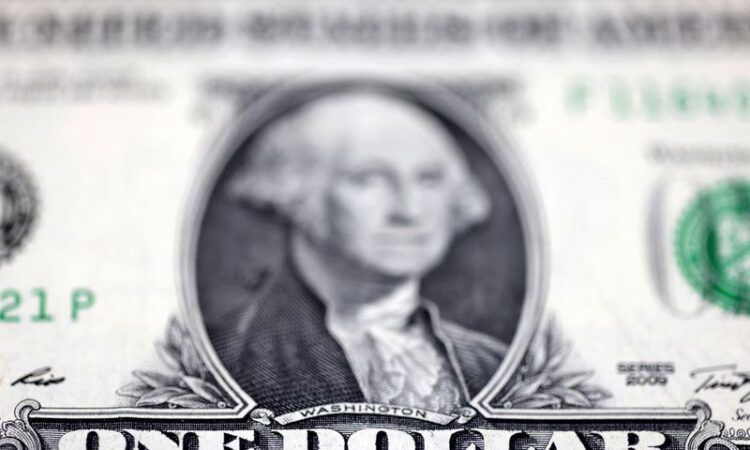
By Marc Jones
LONDON (Reuters) – The dollar rose for a fifth straight session on Wednesday, while stock and bond markets trod water as traders braced for what could be a crucial Federal Reserve meeting later in the day.
Japan’s yen was at a four-month low a day after the Bank of Japan finally ditched its sub-zero rates, but the focus was already on whether the Fed signals two U.S. rate cuts are now likely this year rather than the three markets have been hoping for.
Its quandary is whether progress on inflation has stalled and, if so, whether U.S. rates – which drive the global cost of borrowing – need to stay in the current 5.00%-5.25% range longer than anyone – investors, consumers, politicians and U.S. central bank officials themselves – had expected.
The greenback standing almost 0.5% higher on day suggested many traders now suspect they do, although they also had the yen backpedaling and the pound losing ground too after some softer-than-expected UK inflation data. [/FRX]
There wasn’t much movement in Wall Street futures ahead of the restart there [.N], while in Europe the main morning action was a tumble in luxury goods shares after a hefty profit warning from Gucci maker Kering. [.EU]
Bond markets were laser-focused on the Fed. Benchmark U.S. 10-year Treasury yields were just off a 2024 high hit this week, although the UK inflation numbers meant European yields were on a bit of a slide [GVD/EUR].
“The market is completely indecisive on the number of Fed rate cuts,” said Mathieu Savary, Chief European Strategist at BCA Research, describing it as “a complete coin toss” between two and three at the moment.
The yen’s fall also showed how markets almost always buy the rumour and sell the fact.
“Really that (BOJ move away from negative rates) should have lifted the yen, but instead it has fallen over 1.5% (over the last couple of days) because people expected the step,” Savary said.
The dollar was up 0.5% on the day to 151.70 yen, a fresh four-month high, and close to the 152 level that prompted Japanese authorities to intervene in FX markets in late 2022.
While Japan’s historic shift away from negative interest rates and massive stimulus ushered in a new era of economic policy on Tuesday, analysts expect the BOJ’s monetary normalisation to proceed at a glacial pace.
That has meant an extended lifespan for the popular “carry” trades where investors borrow yen to buy higher yielding currencies.
“It is clear that the BOJ tightening has done nothing to shake a belief in carry,” said Alan Ruskin, global head of G10 FX strategy at Deutsche Bank.
FED AHEAD
Tokyo’s Nikkei was closed for a holiday in Japan overnight, but the yen’s weakness lifted futures 0.4% higher.
MSCI’s broadest index of Asia-Pacific shares outside Japan finished flat although Seoul jumped 1.3%, driven by a 5.6% surge in Samsung’s share price after Nvidia said it was qualifying the South Korean chipmaker’s high bandwidth memory (HBM) chips.
Chinese shares closed fractionally higher too after the central bank there left benchmark lending rates unchanged, as widely expected. The Shanghai Composite gained 0.5%, while Hong Kong’s Hang Seng index crept up 0.2%.
For Fed followers around the world, the risk is that its the new economic projections – the fabled dot plot – signals just two interest rate cuts, down from three, or a later start to the cutting cycle than June.
Top European Central Bank rate setters, meanwhile, have endorsed June as the likely month to start its cuts, and some would like as many as four this year.
“Our decisions will have to remain data dependent and meeting-by-meeting,” ECB President Christine Lagarde told a conference in Frankfurt on Wednesday. “This implies that, even after the first rate cut, we cannot pre-commit to a particular rate path”.
The euro was down against the dollar on the day, but was at its strongest against the Japanese currency since 2008 at 164.66 yen. The Aussie dollar fetched 98.90 yen, just a notch below a nine-year high too.
Oil prices retreated from multi-month highs, however, due to the strong dollar. Brent eased 0.7% to $86.80 a barrel, while gold prices also ticked down to $2,154 per ounce, some distance away from this month’s record high of $2,194.99.
[O/R] [GOL/]
(Additional reporting by Stella Qiu in Sydney; Editing by Mark Potter)
